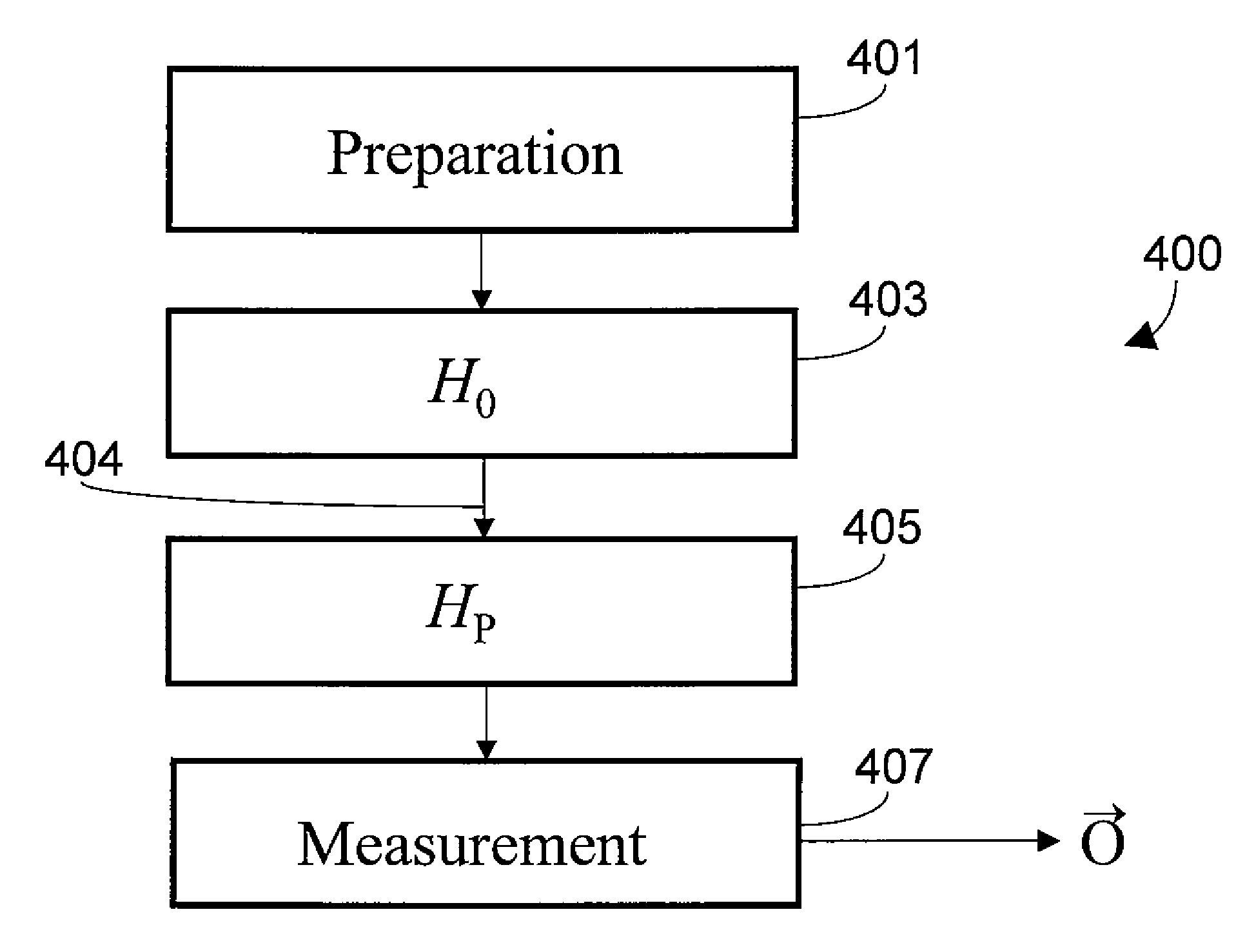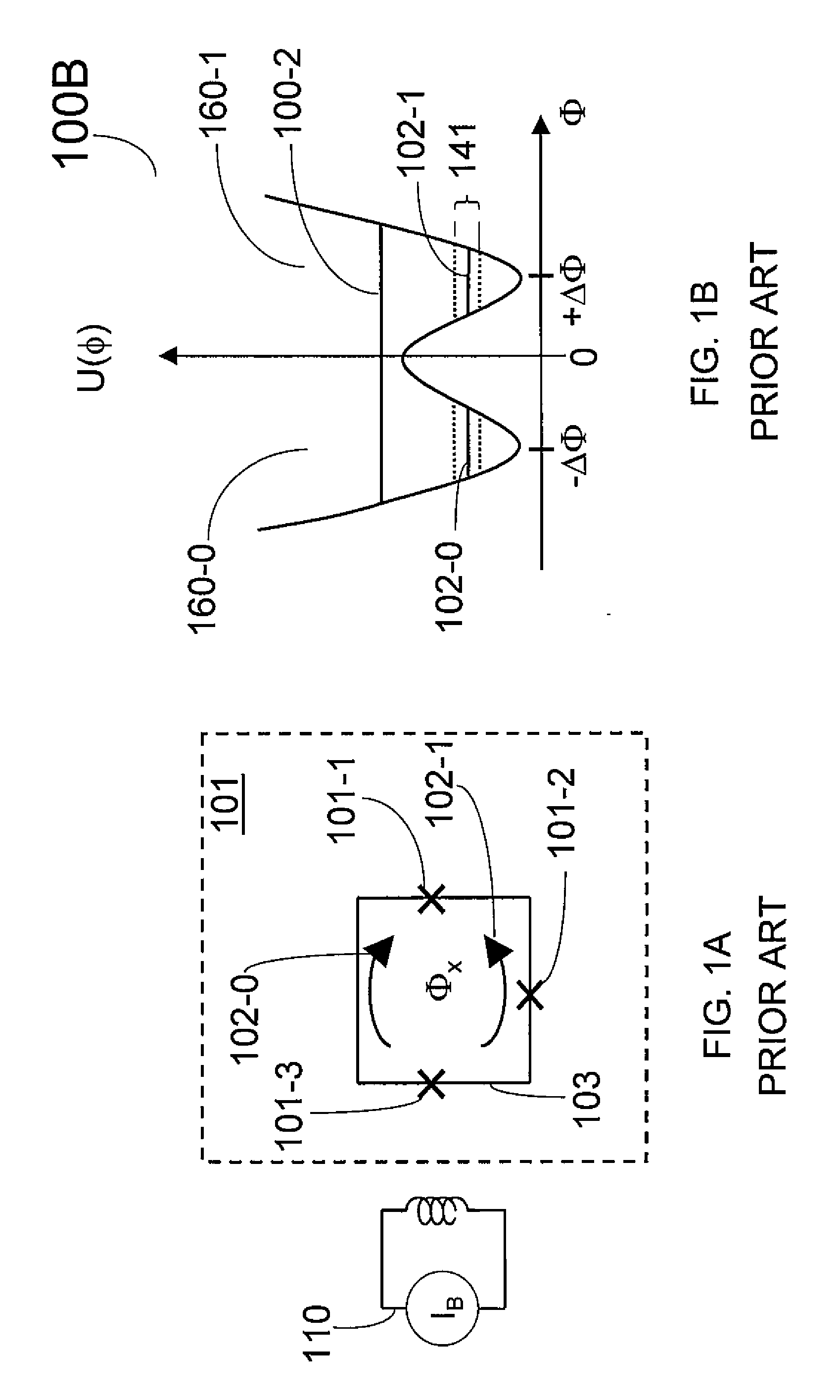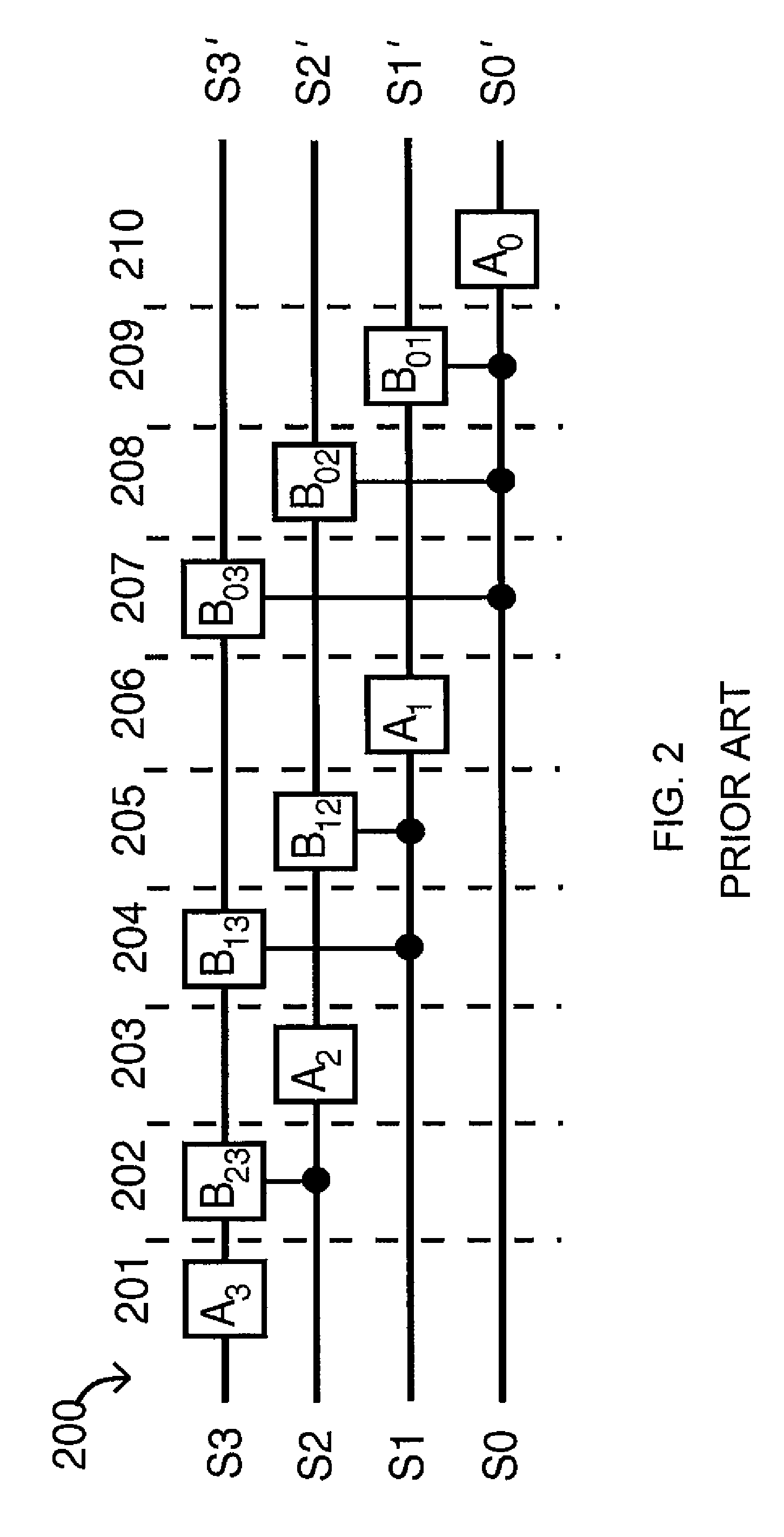Methods of adiabatic quantum computation
a quantum computation and quantum computation technology, applied in computing, semiconductor devices, instruments, etc., can solve the problems of inability to validate the church-turing thesis, several serious obstacles to the practical implementation of model quantum computers, and hampered art, so as to increase the effective charging energy, reduce the rate of parameter change, and increase the gap size of an anticrossing
- Summary
- Abstract
- Description
- Claims
- Application Information
AI Technical Summary
Benefits of technology
Problems solved by technology
Method used
Image
Examples
Embodiment Construction
[0114] Systems and methods for adiabatic quantum computing using superconducting qubits are provided. In various embodiments of the present methods, adiabatic quantum computing is performed on registers of superconducting qubits that have demonstrated quantum computing functionality. Adiabatic quantum computing is a model of quantum computing that can be used to attempt to find solutions for computationally difficult problems.
GENERAL EMBODIMENTS
[0115] When choosing a candidate system for adiabatic quantum computing there are some criteria may be observed. One criterion is that the readout device may be a Stern-Gerlach σZ type observation. A second criterion is that the tunneling term in the problem Hamiltonian may be about zero. For HP=ΔσX+εσZ then Δ≈0. A third criterion is that the magnitude of the tunneling term in the problem, initial, or extra Hamiltonian (HP, H0, HE) may be tunable. A fourth criterion is that the qubit-qubit coupling may be diagonal in the basis of final qubi...
PUM
 Login to View More
Login to View More Abstract
Description
Claims
Application Information
 Login to View More
Login to View More - R&D
- Intellectual Property
- Life Sciences
- Materials
- Tech Scout
- Unparalleled Data Quality
- Higher Quality Content
- 60% Fewer Hallucinations
Browse by: Latest US Patents, China's latest patents, Technical Efficacy Thesaurus, Application Domain, Technology Topic, Popular Technical Reports.
© 2025 PatSnap. All rights reserved.Legal|Privacy policy|Modern Slavery Act Transparency Statement|Sitemap|About US| Contact US: help@patsnap.com



